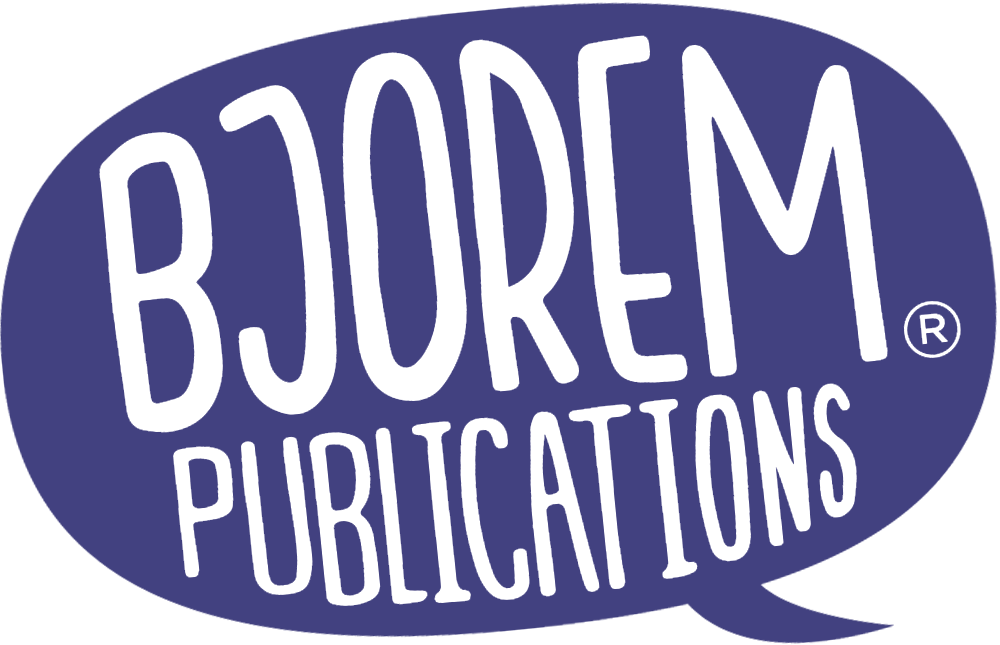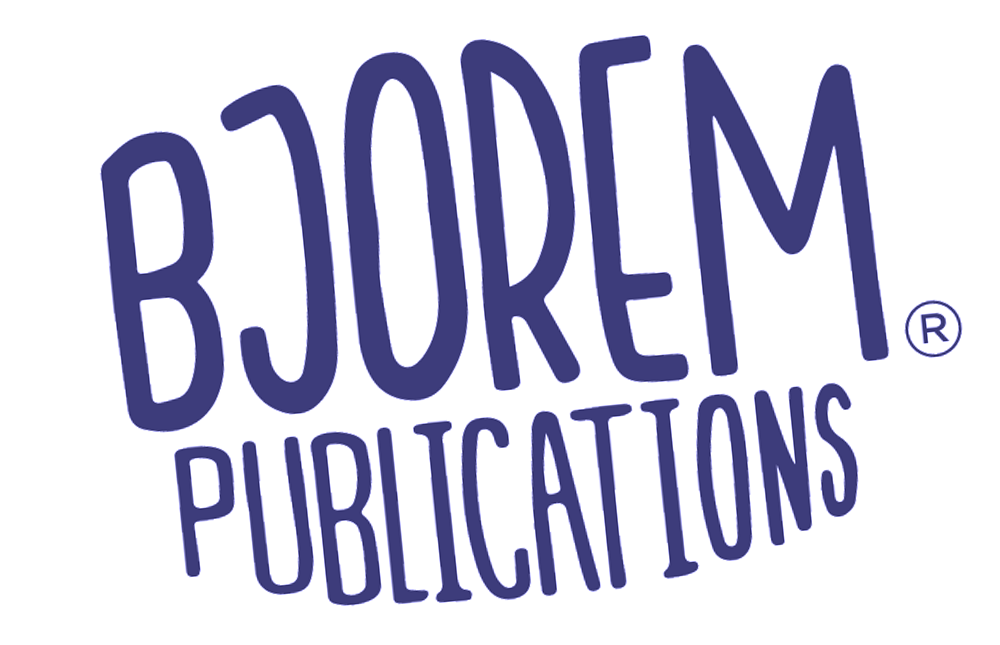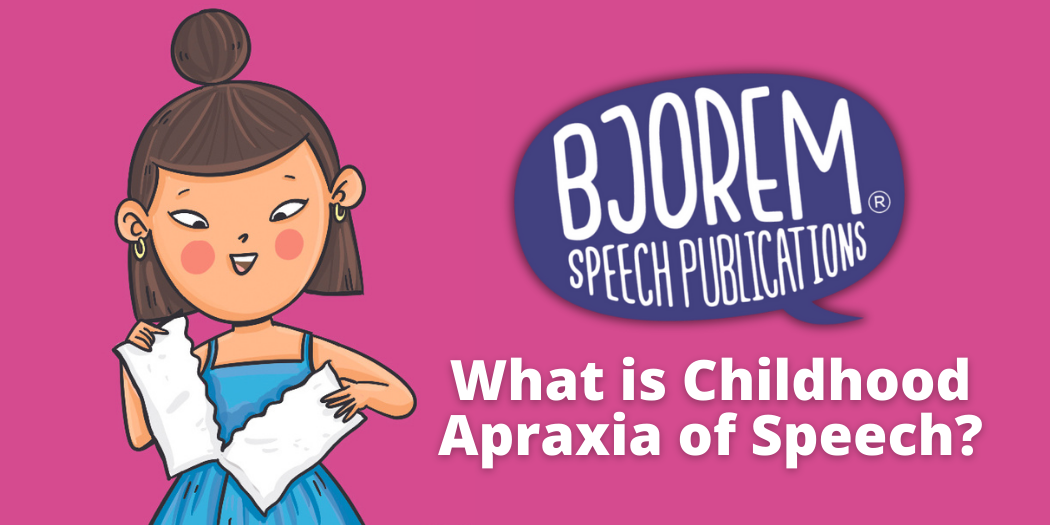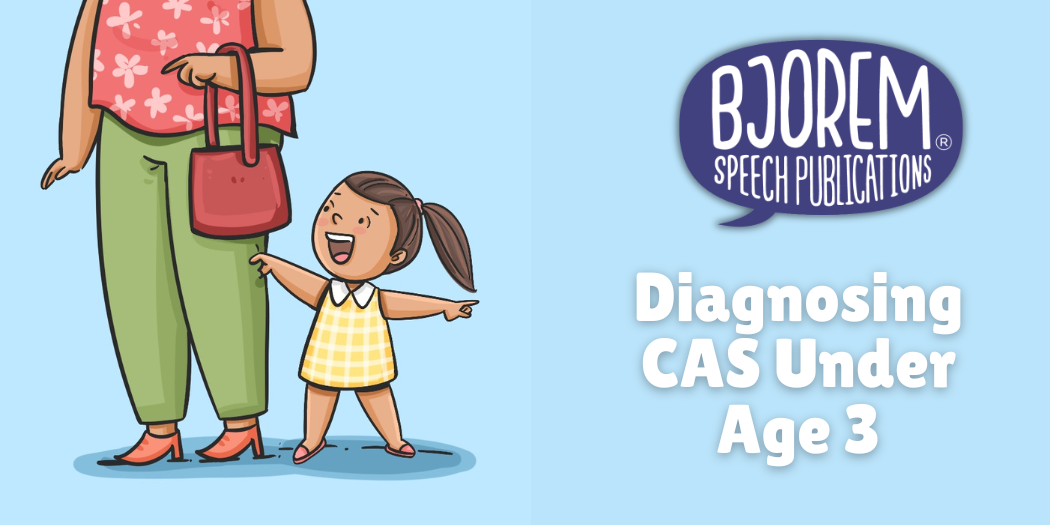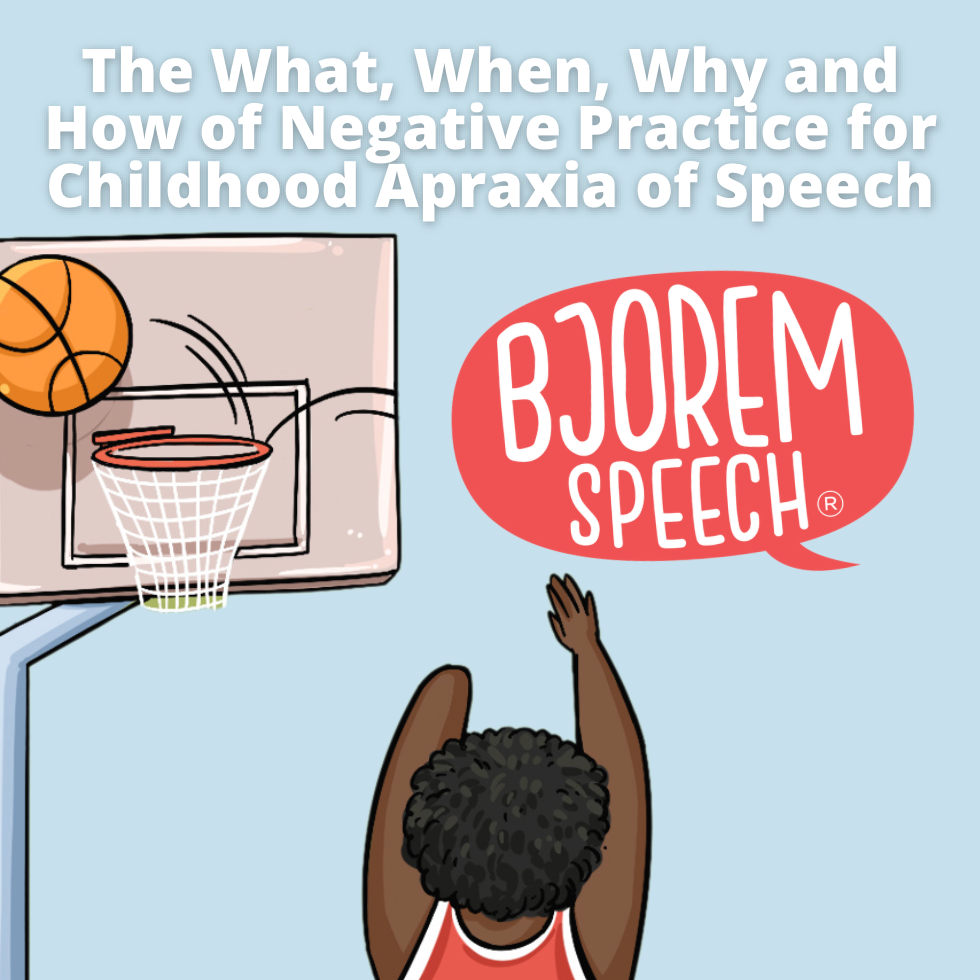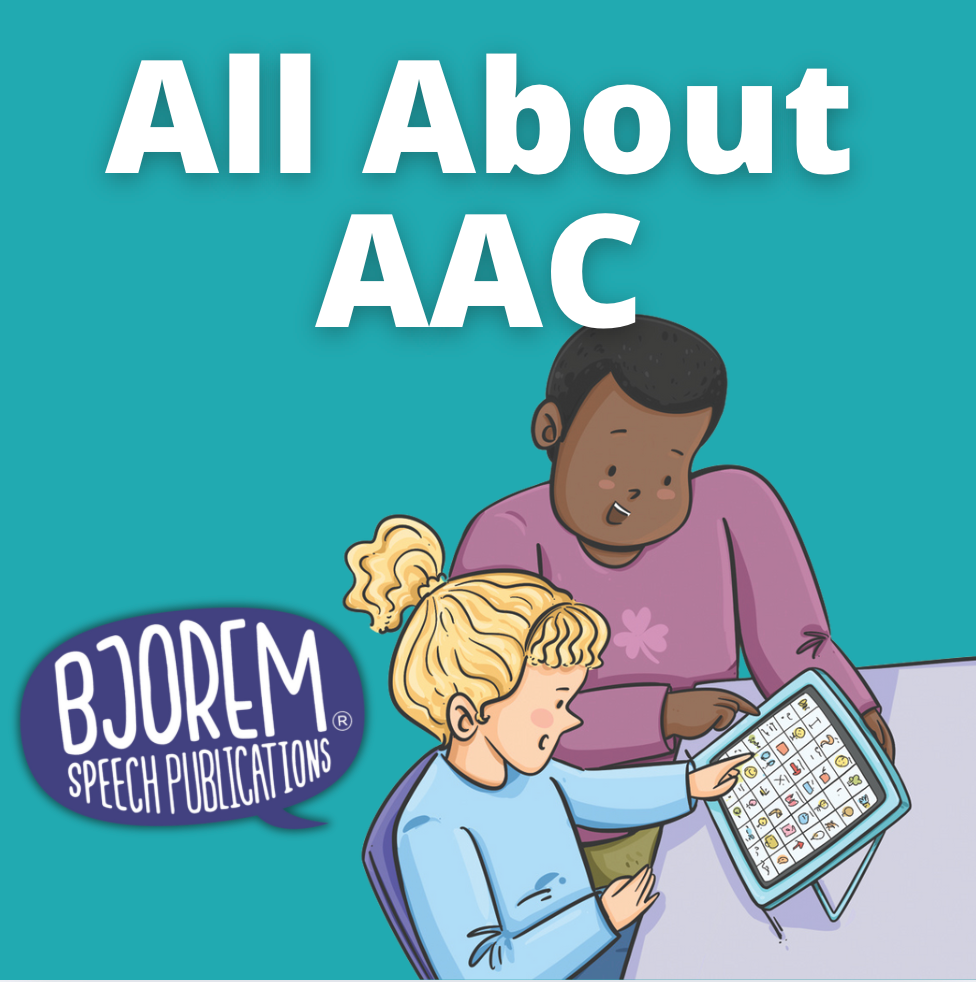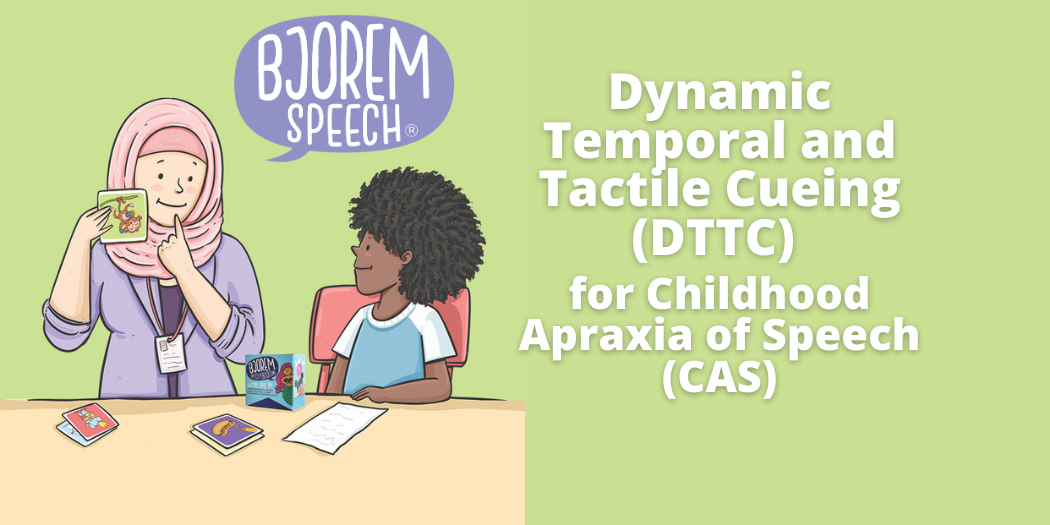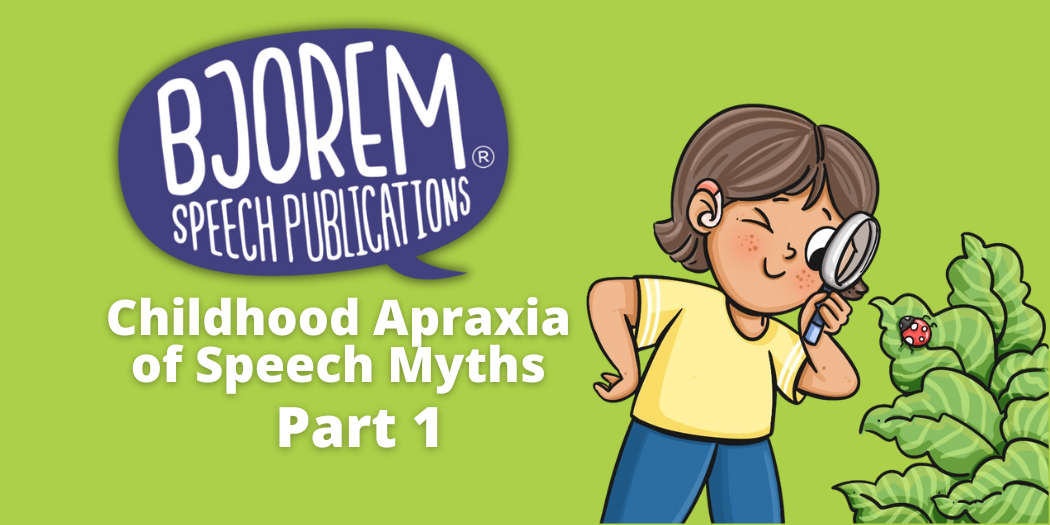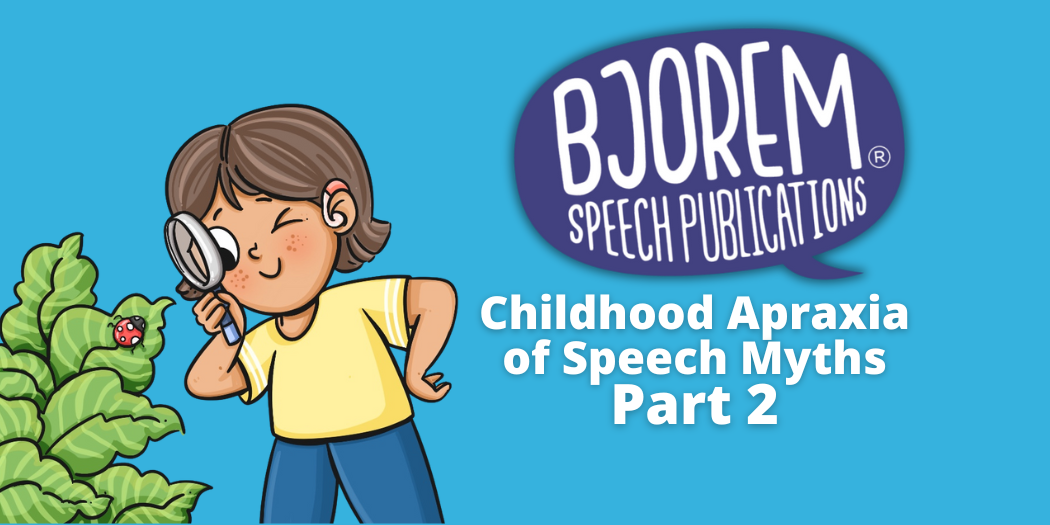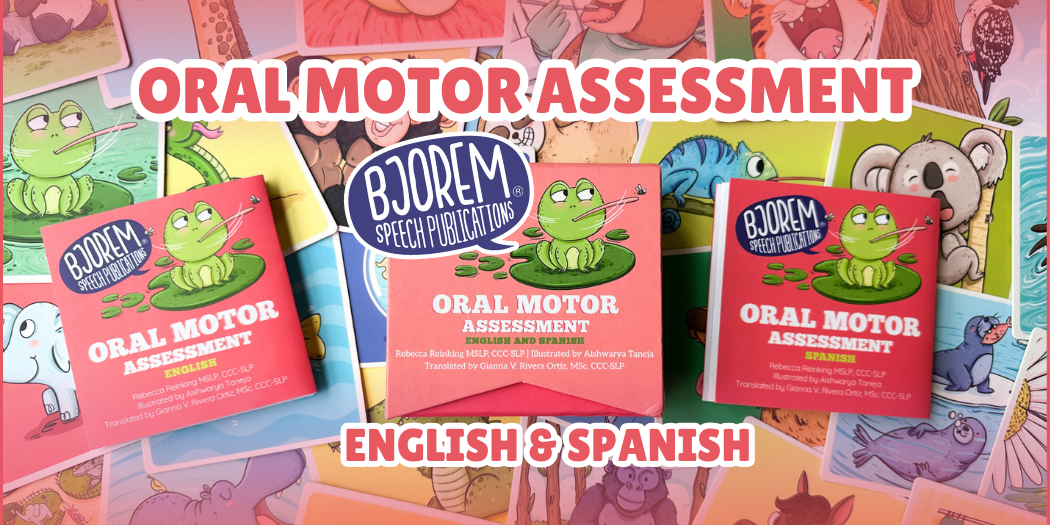What is CAS?
Childhood apraxia of speech, commonly called CAS or Dyspraxia is a rare speech sound disorder in which a child has difficulty programming and planning accurate movements for speech. With CAS, the brain and the muscles for speech (lips, tongue, jaw, soft palate, vocal folds, diaphragm) have a difficult time communicating motor plans for speech movement. We typically don’t see weakness of muscles with CAS, instead the child’s brain has a difficult time with coordination of complex movements, impacting the child’s speech, rhythm, and prosody.
My definition is…
“Childhood apraxia of speech is a SPEECH LABEL (not a medical diagnosis) for difficulty with planning and programming movement for speech. Our brains plan and program the movements needed using our tongue, lips, jaw, palate, vocal cords, and diaphragm. Our brains also must judge when to move, at what speed, in what direction and distance, with how much muscle contraction… all at the same time. CAS is when there is a disconnect in the ability to plan and program movements speech production and prosody.”
Diagnosis of CAS
CAS is diagnosed through a dynamic motor speech assessment. According to the American Speech Hearing Association (ASHA) position statement, a trained speech-language pathologist is the professional responsible for making the primary diagnosis of CAS.
Characteristics of CAS
Children diagnosed with childhood apraxia of speech will have observed characteristics. Characteristics may vary depending on the child’s age and where they are at in their speech journey.
Some characteristics are discriminative to CAS, meaning they are more likely observed in CAS and less likely observed in other speech sound disorders. Observation of these characterizes help us distinguish CAS from other types of speech disorders. Discriminative characterizes include:
- Prosody Errors - Limited vocal range, equal stress (may sound monotone), segmenting or pausing between sounds and syllables, incorrect stress.
- Groping - Trial and error movements - usually observed in elicited responses, not as often observed in spontaneous speech.
- Difficulty with Transitional Movement Gestures - Lengthened or disrupted movements between sounds and syllables. Wrong movement, wrong place, wrong time. Difficulty establishing initial articulatory gestures.
- Inconsistent Voicing Errors - Inconsistent use of voicingg., do for two
- Vowel Distortions - Vowel distortion, not necessarily a substitution. Vocal tract is in the incorrect shape. Vowel sounds wrong or off.
Other characteristics may include:
- Difficulty with Multisyllabic Words - as words get longer they become more difficult to motor plan
- Slow Rate - Decreased rate of speech
- Inconsistent Errors - Noted difference in productions on repeated trials. e.g., beby, debi, beddi, baby
- Use of Intrusive Schwa - Inappropriate addition of schwa e.g., nouh (no), gulue (glue), bedu (bed).
Causes of CAS
CAS in many instances a cause can't be determined
CAS may be the result of brain (neurological) conditions or injury, such as a stroke, infections or traumatic brain injury.
CAS may also occur as a secondary characteristic of genetic disorders or syndromes.
Treatment of CAS
Parents should seek diagnosis and treatment from a speech-language pathologist trained to assess, diagnosis and treat CAS. If you suspect CAS, getting the correct diagnosis and treatment will be better for the long term prognosis. Ask your therapist if they are familiar with a dynamic motor speech assessment for CAS and learn more about Dynamic Temporal & Tactile Cueing (DTTC) therapy approach. I have found it to be very successful in my practice. For more information about childhood apraxia of speech follow me on Instagram @bjoremspeec
Jennie

Jennie Bjorem M.A., CCC-SLP is a speech-language pathologist and childhood apraxia of speech specialist. She has been practicing for over 23 years and has specialized in CAS for over 7 years. Jennie travels the world educating SLPs on assessment, diagnosis and treatment of CAS. She is a huge supporter of using DTTC in play-based therapy to obtain excellent outcomes for young children with CAS.
A diagnostic marker to discriminate childhood apraxia of speech from speech delay "Diagnosis of CAS was confirmed using a version of the pediatric adaptation of the Mayo Clinic assessment for motor speech disorders ("Mayo10") (Shriberg and Strand, 2014; Shriberg, Potter, & Strand, 2011; Shriberg, Lohmeier, Strand, & Jakieiski, 2021).
Strand, Edythe (2017). Appraising Apraxia. ASHA Leader hips://doi.org/10.1044/leader.FTR2.22032017.50
